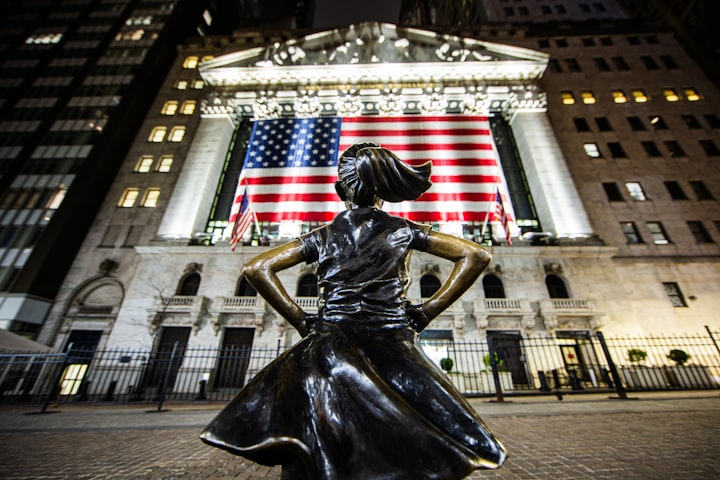What Are NFTs? The Crypto-Art That Is Changing The World Forever
A new way to represent a unique asset-based on Blockchain technology.

Spotlight
- A new way to represent a single asset based on Blockchain technology.
- NFTs are empowering content creators more than ever.
- Powered by Smart Contracts on Blockchains.
- NFTs cannot be destroyed, they are individual and their authenticity is assured.
- NFTs are created from digital objects, but they do not have to be tangible.
We are in a world in constant change and where paradigms are increasingly fragile and ephemeral. A place that only needed a global event in catastrophe mode such as the pandemic to further accelerate the social, economic, technological, and cultural rhythms.
Perhaps because of that precariousness that affects from the most emotional to the most physical, is why a totally contemporary and ethereal concept is gaining so much prominence: NFTs.
Because there is not a week in which we do not have three or four powerful news about this revolutionary digital asset that represents objects of the world and that go hand in hand with cryptocurrencies.
But what do we really know about NFTs? So far, if we broaden the focus as much as possible to know how this topic is being talked about, it has gone from Techcrunch, The Verge, Wired, or Endgadget, to embracing the most generalist media.
Ok, But What Are NFTs?
Non-fungible tokens (NFTs), also often called crypto-collectibles, expand on this idea. Unlike cryptocurrencies, in which all tokens are created equal, each non-fungible token is unique and limited in quantity. So, let’s find out what NFTs are, what they can be used for, and how a rainbow cat gif was sold for half a million dollars.
NFTs are tokens that we can use to represent ownership of unique assets or items. They allow us to “tokenize” things like art, collectibles, and even real estate, and so much more. They can only have one official owner at a time and are protected by Blockchain technology, meaning that no one can modify the ownership record of these digital assets.
NFT stands for NON FUNGIBLE TOKEN. “Non-Fungibles” is an inexpensive term used to describe things like real estate, song files, or computers. These items are not interchangeable with other items because they have unique properties.
Fungibles, on the other hand, can be traded because their value defines them rather than their unique properties. For example, Bitcoin [BTC] or dollars [USD] are fungible because 1 BTC/$1 USD is exchangeable for another 1 BTC/$1 USD.
“An NFT is a digital asset that represents real-world objects such as art, music, game elements, or videos. They are bought and sold online, often with cryptocurrencies, and are generally encoded with the same underlying software as many cryptos.” — The Dapplist
- Unlike physical items such as stamps, gold, and artwork, NFTs are intangible assets that we can see digitally and online but cannot touch.
- NFTs are unique. And, at most, they can be part of a very limited collection or series.
- They have unique identification codes. This is what makes them official and gives them a kind of authorship. Unlike licensed songs or movies that you can assign, ownership is entire with the buyer.
- NFTs are being created from digital objects. These elements in turn can be tangible or intangible.
- Digital art, GIFs, videos, highlights, collectibles, virtual avatars, video game skins, digital cards, music, tweets, memes… All these concepts have already been converted into NFT.
- They are indivisible. That is, the NFTs do not divide into parts. Therefore, its value is complete as an entity or token.
- Traceables. Blockchains keep a history of who has bought or sold an NFT. Likewise, you can verify who the current owner is, who the original creator was, and even what hands it passed through.
NFTs Origins — How Did We Get Here?
To put ourselves a bit, we would have to go back to 2014. That’s the year Counterparty was founded: a peer-to-peer financial platform and open-source distributed Internet protocol built on top of the Bitcoin blockchain. On this platform, the creation of assets with a decentralized exchange and even a cryptographic token was allowed. His many initial projects ranged from trading card games to meme swapping.
If you want more information about NFT prehistory, click here.
A year later, the creators of the game ‘Spells of Genesis’ became the pioneers in issuing game assets on a blockchain. Also, they did it through Counterparty. As if this were not enough, the development of ‘Spells of Genesis’ was financed through a token called BitCrystals, which was used as in-game currency.
With this breeding ground, we come to 2016, where memes began to move with blockchains. Specifically, Pepe The Frog. This was professionalized in such a way that, in the case of not trusting the Bitcoin blockchain, Rare Pepe Meme Directory established the figure of the expert. That is professionals who certified the rarity of Pepe’s memes. It is here that the Internet understands that there is a demand for unique digital files.

Already in 2017, the Cryptopunks project was created. It is a plan with a series of unique characters generated by an algorithm and exposed on the Ethereum blockchain. The 10,000 characters generated are unique and are based on humans, zombies, aliens, or apes. Nine of these 10,000 Cryptopunks launched in 2017 were sold last week for $ 16.9 million.
A total madness.
How Do NFTs Work?
As explained in The Verge, most NFTs are part of an Ethereum blockchain. And what is Ethereum? A cryptocurrency in the purest bitcoin or dogecoin style. The caveat is that its blockchain also supports NFTs. And they do so because they are capable of storing additional information that makes them work differently than, say, an ETH coin.
By the way, to refresh your memory, a blockchain is a kind of distributed public ledger that records transactions. This digital ledger is recording all transactions made. The copies of this ledger are not stored in a central place but are maintained by superusers. These superusers are classified as “nodes” and others as “miners.” The latter are the ones that batch process the transactions and add them to the ledger in “blocks”, cryptographically linking each block with all the previous blocks.
Art and Collectibles
Apps that focus on digital ownership increase creators’ earning potential. A new way to invest in your favorite artists and their work.
Art & Fashion

Foundation: Invest in culture. Buy, trade, and sell unique digital artwork, fashion from some amazing artists, musicians, and brands.
SuperRare: Buy digital artwork directly from artists or in secondary markets.
Nifty Gateaway: Buy digital works from the best artists, athletes, brands, and creators. Nifty Gateway is the leading digital goods marketplace.
Async Art: Create, collect and trade #Programmable Art — Digital paintings divided into “Layers” that you can use to affect the overall image.
Digital Collectables

Bored Ape Yacht Club: A limited NFT collection where the token itself doubles as your membership to a swamp club for apes.
OpenSea: Buy, sell, discover, and trade limited edition (NFT) products.
CryptoPunks: Buy, auction, and offer punks for sale — one of the first collectibles on Ethereum.
Rarible: Create, sell and buy tokenized collectibles.
The rise and success of the NFT market have permeated other types of markets as well. For example, that of sports.
The NBA, possibly the most developed sports league at the commercial level and the most markedly multinational (there is more and more foreign presence in this USA competition) has not wanted to waste the momentum.
Under the name of ‘NBA Top Shot Moments’, the North American professional basketball league markets the highlights of the day in NFT format. For 240 thousand dollars, these short videos have a digital record of authenticity, and the line of business points to the figure of 230 million.
And this is just the beginning. We’re currently in the early stages.
Stay tuned for more.
This article was previously published on Medium by the same author.
Subscribe To The Free Weekly The Edition with TheJuanSC Newsletter 📨☕️🪴
About the Creator
Juan Cienfuegos
Host of BitCorner 🎙️The 1st Salvadoran Bitcoin Podcast | Author of The Savior: #Bitcoin 🇸🇻⚡️ | engineer + educator






Comments
There are no comments for this story
Be the first to respond and start the conversation.